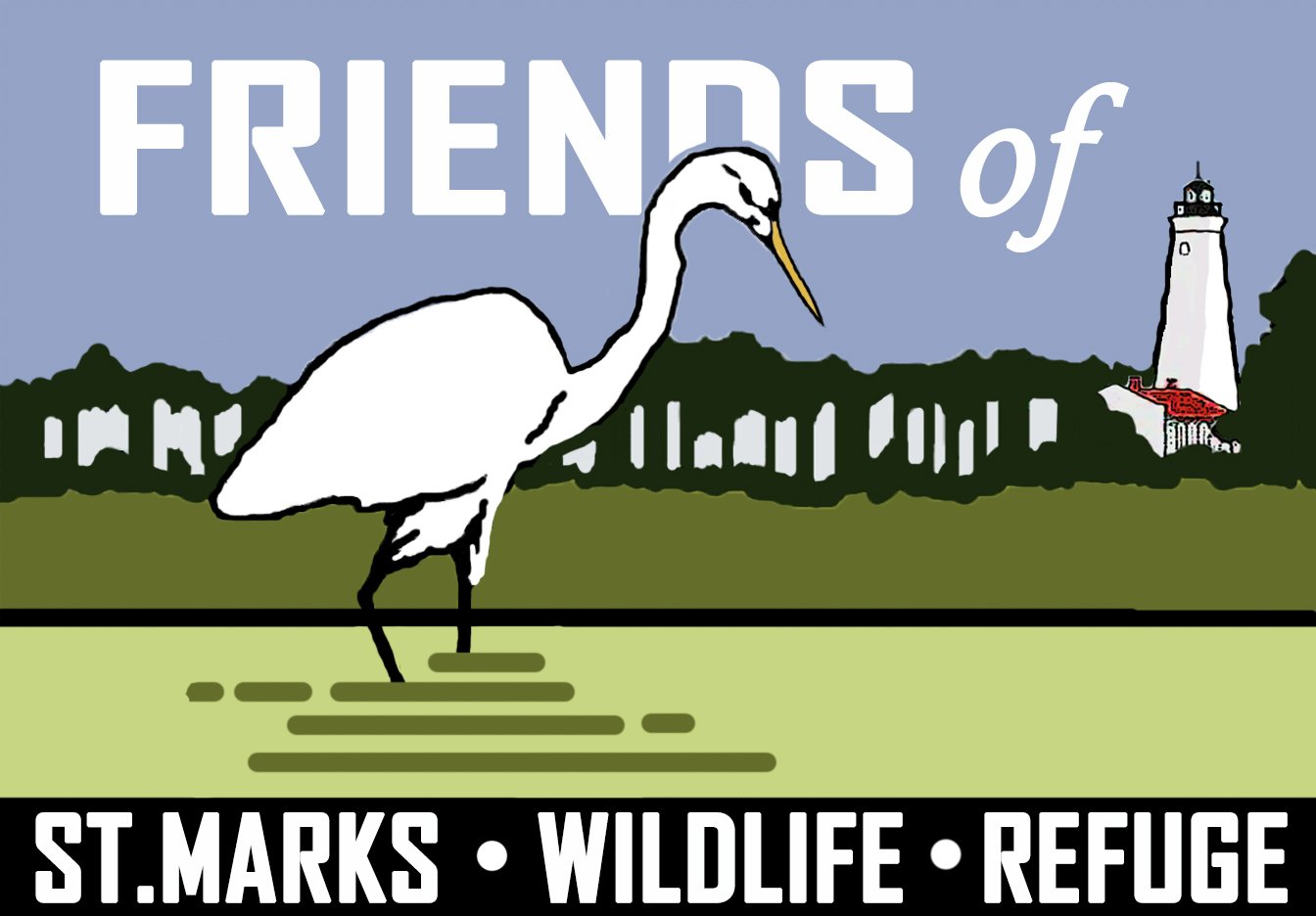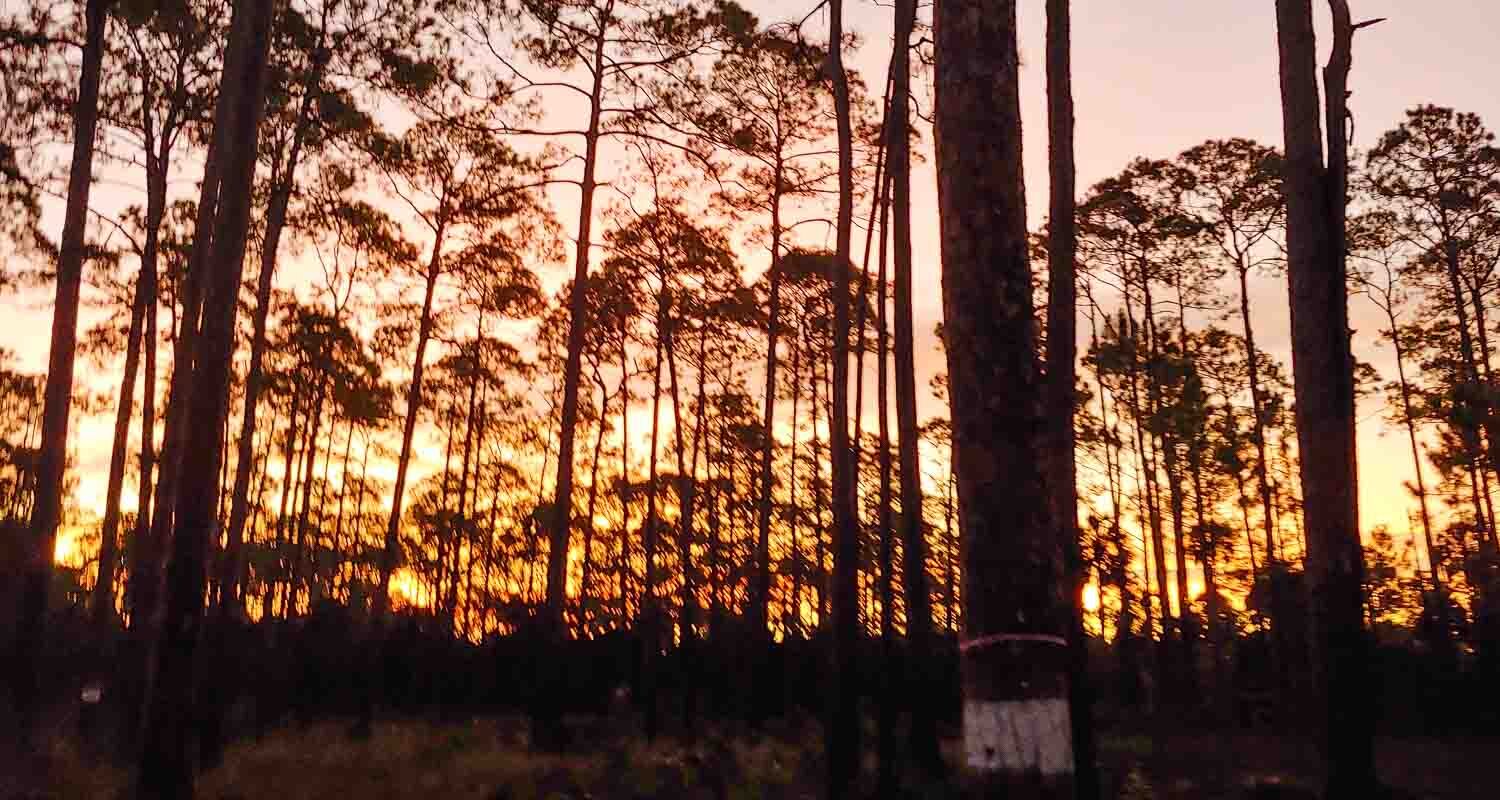RCW Translocations: One Part of the Larger Reintroduction Plan
By: Brianna Bjordahl, Fall 2019 Biology Intern
The sun is rising over cluster 119 North when the first woodpecker lifts its face to the front of its cavity.
“Wait, I think I see movement,” says Justine Fox, one of the two USGS bio technicians helping with the morning releases.
“Here too,” says Kira Miller, the second USGS technician.
Each of us looking through a pair of binoculars, we can see two small black and white faces pecking at the metal screening over the two nesting cavities. Two new woodpeckers have woken at St. Marks.
Justine Fox and Kira Miller looking for signs of movement on the morning of the release
We decide to release the male first. His nesting cavity faces a little more towards the female’s, so she should be able to see him as he flies out. I take hold of the P-cord running down the tree from the metal screening and give it a sharp tug. A metal grate lands at my feet a second later. Moments after that, squawking is heard overhead as the male RCW flies free. We free the female next, and she leaves just as quickly. To our excitement, she immediately flies over to the tree where our male just went.
It’s a magical moment. Meeting for the first time, the two woodpeckers chirp as they flit around one another, leapfrogging up the trunk, before they set out west together. Our team of three grins to each other, then walks over to collect our equipment. With luck, those two woodpeckers will stay together and become a breeding pair.
Four more pair releases have just occurred across the refuge. The work is part of an ongoing project to bring the endangered woodpecker back to St. Marks.
Kelly Johnson and Brianna Bjordahl - St. Marks bilology interns, Fall, 2019
The decline of Red-cockaded Woodpeckers can largely be attributed to the loss of the Longleaf Pine ecosystem. Longleaf pines are slow-growing, fire-dependent trees. Their slow growth, however, often makes older trees more susceptible to red heart disease, a fungus which softens the tree’s heartwood. This softening better allows the woodpeckers to create their nesting cavities, so when the Longleaf Pine ecosystem began to collapse throughout the 1900s due to logging and fire suppression, so too went the woodpeckers.
Concerted conservation efforts to recover the Longleaf Pine ecosystems and reintroduce the RCWs have seen incredible success in recent years. Releasing the ten new birds at St. Marks that morning was just one small step at the end of a long history of important work.
The ten woodpeckers we released on the morning of October 24th originated from Fort Stewart in Fort Stewart, Georgia. The following morning, on October 25th, we released six more birds – three more potential breeding pairs – originally belonging to the pine forests of Camp Blanding in Starke, Florida. It is thanks to the ongoing conservation efforts of these refuge partners, and the charitable donations of refuge sponsors that this iconic species has been able to make such a remarkable comeback.
For a more detailed account of the specific work that goes into preparing the clusters for the woodpeckers’ arrival, introducing the new birds to their cavities, and releasing them, check out the videos below.
Step 1 - prepare a home
Step 2 - find an available woodpecker
Step 3 - introduce the woodpecker to its new home
Special mention to refuge biologist, Joe Reinman, forest service biologist, Jonathan Chandler, my fellow biology interns, Kelly Johnson and Chloë Dubben, as well as our colleagues at Fort Stewart and Camp Blanding, whose work was instrumental in introducing these birds to their new home.




